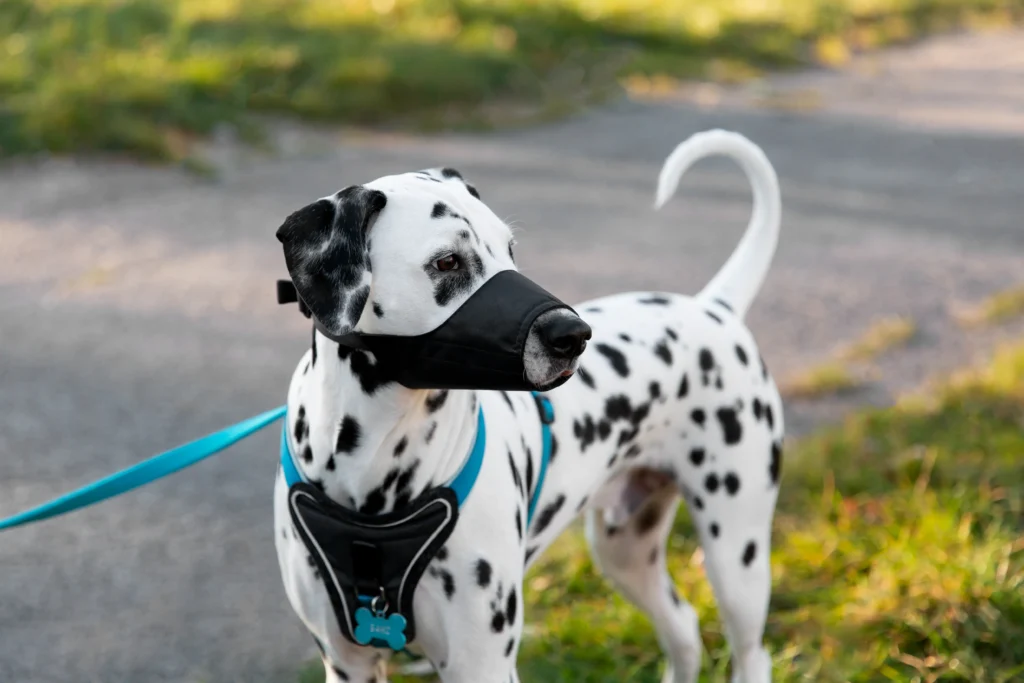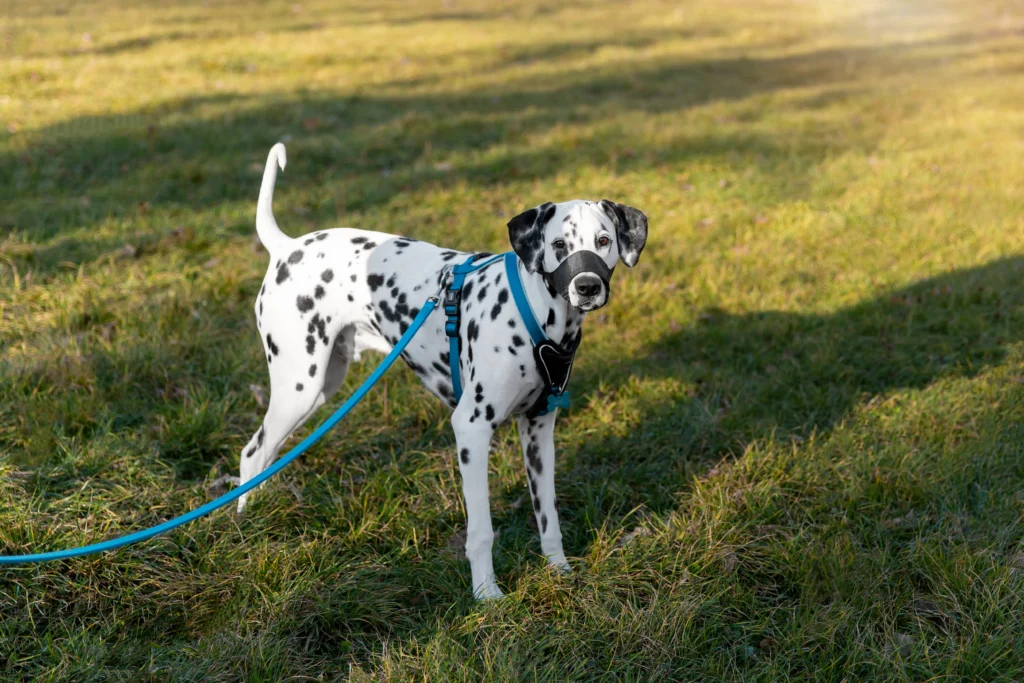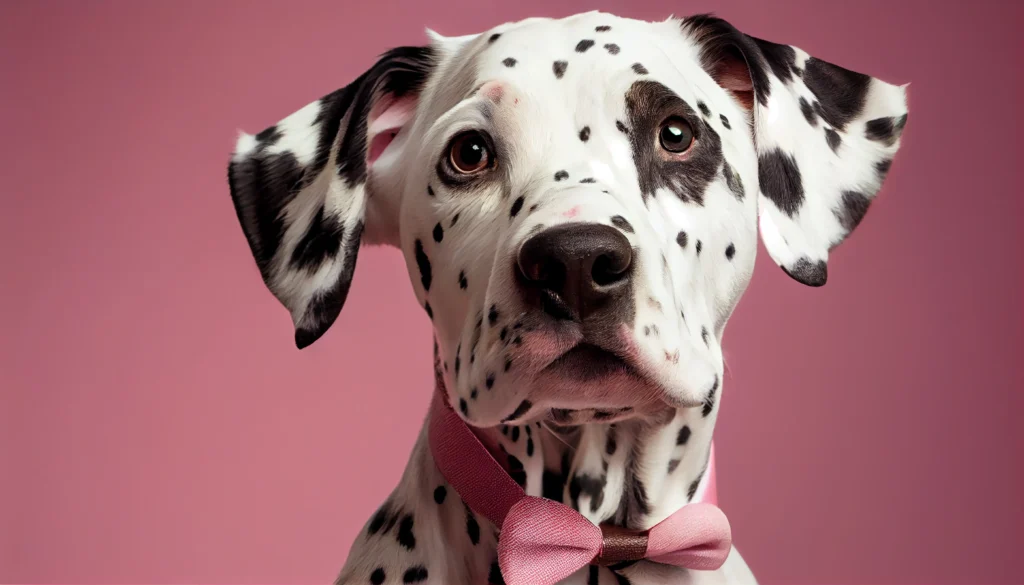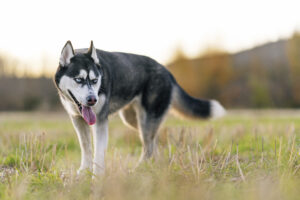Introduction
When most people think about Dalmatians, they envision the iconic spotted coat made famous by Disney’s “101 Dalmatians.” The allure of these distinctive black-and-white dogs has captivated dog lovers for generations. However, breeding Dalmatian dogs is a complex endeavor that extends far beyond simply pairing two beautiful spotted canines together.
As anyone who has ventured into Dalmatian breeding can attest, the journey is filled with challenges, surprises, and responsibilities that many prospective breeders aren’t fully prepared for. Whether you’re considering breeding Dalmatians as a hobby or planning to establish yourself as a reputable Dalmatian breeder, there are some brutal truths you need to confront before taking this significant step.
In this comprehensive guide, we’ll explore the five brutal truths about breeding Dalmatian dogs that experienced breeders wish they had known from the start. From genetic health concerns to the financial and emotional investment required, this article aims to provide a realistic picture of what Dalmatian breeding truly entails.

Truth #1: Dalmatian Genetics Can Be a Minefield
One of the most challenging aspects of breeding Dalmatian dogs involves navigating their unique genetic landscape. While their distinctive spotted coat pattern is what makes Dalmatians so recognizable, it’s just the tip of the iceberg when it comes to the complex genetics at play.
The Unique Uric Acid Challenge
Perhaps the most significant genetic concern in Dalmatian breeding is the breed’s predisposition to high uric acid levels. Almost all Dalmatians carry a genetic mutation that affects their ability to metabolize purines, leading to elevated uric acid in their urine. This can result in:
- Urinary stones (urolithiasis)
- Painful urination
- Urinary tract blockages
- In severe cases, kidney damage
While responsible Dalmatian breeding tips now include genetic testing for the “low uric acid” (LUA) gene, introduced through a breeding program with Pointers, many traditional breeders resist incorporating this genetic diversity. Any serious breeder learning how to breed Dalmatians must understand and address this health concern.
Hearing Impairment and Coat Connection
Another brutal genetic truth about breeding Dalmatians is the connection between their beautiful spotted coat and congenital deafness. According to research from the Orthopedic Foundation for Animals, approximately 30% of Dalmatians have some degree of hearing impairment:
- 8% are completely deaf
- 22% are deaf in one ear
- The remaining 70% have normal hearing
This hearing impairment is linked to the same genes that create their distinctive spotting pattern. The genes responsible for the white base coat and spots affect the development of cells in the inner ear. This creates an uncomfortable reality: the trait that makes Dalmatians so desirable is directly connected to one of their most prevalent health problems.
Responsible Dalmatian breeding requires BAER (Brainstem Auditory Evoked Response) testing for all breeding stock and Dalmatian puppies. Ethical breeders typically do not breed dogs with bilateral deafness, though opinions vary on breeding those with unilateral hearing loss.
Coat Color Inheritance in Dalmatians
Understanding Dalmatian coat color inheritance is essential for any breeder. While the classic black spots on a white background is the most common and recognized variety, Dalmatians can also have:
- Liver (brown) spots
- Lemon (yellow/orange) spots
- Blue (gray) spots
- Tri-color patterns (in some lines)
The inheritance patterns for these colors follow specific genetic rules. For example, liver is recessive to black, meaning a Dalmatian needs to inherit the liver gene from both parents to express liver spots. A serious breeding Dalmatian dogs program requires understanding these inheritance patterns to predict litter outcomes.
Truth #2: Pregnancy and Whelping Can Be Particularly Challenging

Dalmatian pregnancy and the whelping process present unique challenges that prospective breeders should be prepared for. From conception to delivery, breeding Dalmatians requires vigilant attention and specific knowledge.
Understanding the Dalmatian Heat Cycle
Before pregnancy even begins, breeders must thoroughly understand the Dalmatian heat cycle. Typically, female Dalmatians come into heat (estrus) approximately every six months, though this can vary by individual. The complete cycle includes:
- Proestrus (7-10 days): Swelling of the vulva and bloody discharge, but the female is not yet receptive to males
- Estrus (5-10 days): The female is receptive to mating, discharge becomes lighter in color
- Diestrus: The period after estrus when hormone levels change
- Anestrus: The resting period between heat cycles
Timing breeding correctly within this cycle is crucial for successful conception. Most experienced breeders recommend breeding on days 10-14 from the start of proestrus, but progesterone testing provides more accurate timing for individual dogs.
Dalmatian Litter Size and Complications
The average Dalmatian litter size ranges from 6 to 9 puppies, though litters of 10-15 puppies are not uncommon. This large Dalmatian litter size creates several challenges:
- Increased risk of dystocia (difficult labor)
- Greater likelihood of requiring cesarean section
- More competition for nutrition during nursing
- Higher risk of fading puppy syndrome
- Greater financial and time investment in puppy care
Dalmatians also have a higher than average risk of pregnancy complications. The breed’s anatomy, combined with potentially large litter sizes, means that emergency C-sections are relatively common. Any serious breeder must have an emergency fund and plan in place before breeding Dalmatian dogs.
The Intensive Early Weeks
Once Dalmatian puppies arrive, the real work begins. The first three weeks are particularly intensive, requiring around-the-clock attention:
- Monitoring puppy weight gain
- Ensuring all puppies are nursing adequately
- Supporting the mother’s recovery and nutrition
- Watching for signs of illness or distress
- Managing temperature in the whelping area
- Beginning early neurological stimulation
Dalmatian puppy development stages proceed rapidly, and proper care during these early weeks significantly impacts their lifelong health and temperament. By week three, breeding Dalmatian dogs at home becomes even more hands-on as puppies begin exploring and requiring more space and stimulation.
Truth #3: The Financial Reality Is Sobering
One of the most brutal truths about breeding Dalmatian dogs is the financial investment required to do it properly. Many novice breeders enter with dreams of adorable puppies and fail to calculate the true costs involved.
The Investment Before Conception
Before a single Dalmatian puppy is conceived, responsible breeders invest thousands of dollars in:
- Health testing for breeding stock (minimum $1,000-$1,500 per dog)
- Hip evaluations
- BAER hearing tests
- Thyroid panels
- Cardiac examinations
- Genetic disease testing
- Show or sport titles to verify conformation and temperament ($2,000-$5,000+)
- Dalmatian stud dog fees ($1,500-$2,500)
- Progesterone testing and veterinary reproductive services ($300-$800)
- Quality nutrition and supplements ($100-$200/month)
Pregnancy and Whelping Expenses
Once pregnancy is confirmed, the expenses continue to accumulate:
- Prenatal veterinary care including ultrasounds and x-rays ($300-$600)
- Whelping supplies including box, heating pads, scales ($300-$500)
- Emergency C-section fund ($1,500-$3,000)
- Lost income due to time off work for whelping and puppy care (varies)
Puppy Rearing Costs
After the Dalmatian puppies arrive, expenses include:
- Increased feeding costs for nursing mother ($200-$300)
- Puppy food during weaning and growth ($500-$1,000)
- Veterinary care including vaccinations and deworming ($100-$200 per puppy)
- Microchipping ($20-$50 per puppy)
- Registration fees ($25-$35 per puppy)
- Socialization and enrichment supplies ($200-$400)
The Reality of Returns
Even with Dalmatian puppies selling for $1,500-$3,000 each, many responsible breeders barely break even or operate at a loss. When accounting for the occasional emergency, smaller than expected litters, or puppies that need to be kept for evaluation, breeding Dalmatian dogs is rarely profitable when done ethically.
A responsible Dalmatian breeding program is best viewed as a passion and commitment to the breed rather than a business venture. Those seeking to profit from dog breeding often cut corners on health testing, proper care, or lifetime support for the puppies they produce.
Truth #4: Health Issues Can Be Heartbreaking
Perhaps the most emotionally challenging truth about breeding Dalmatian dogs is confronting the health issues that can affect your breeding program. Despite the most careful planning and testing, Dalmatian health issues in breeding can still emerge and devastate even experienced breeders.
Beyond the Well-Known Issues
While deafness and urinary stones are well-documented in the breed, Dalmatians are also predisposed to:
- Hip dysplasia
- Allergies and skin conditions
- Thyroid disorders
- Epilepsy
- Laryngeal paralysis
- Eye disorders including cataracts
- Copper storage disease (in some lines)
Each of these conditions requires specific testing protocols and careful breeding decisions. A comprehensive Dalmatian breeder guide should include detailed information on testing for all these conditions.

The Emotional Toll
The emotional aspects of dealing with health issues in a breeding Dalmatian dogs program cannot be overstated:
- The heartbreak of discovering health issues in a beloved breeding dog
- Difficult decisions about removing dogs from breeding programs
- Supporting puppy buyers through diagnoses and treatment
- Guilt and self-questioning when problems emerge despite testing
Many breeders find that the emotional stress of health issues is far more challenging than the financial aspects. Developing a support network of other ethical breeders becomes essential for navigating these difficulties.
Ethical Dilemmas in Selection
Creating a Dalmatian breeding checklist must include protocols for addressing health issues when they emerge:
- How to handle puppies born with bilateral deafness
- When to spay/neuter versus maintain breeding rights
- What level of minor issues is acceptable in an otherwise exceptional dog
- How to balance genetic diversity with health clearances
These ethical questions have no easy answers and represent some of the most challenging aspects of breeding Dalmatians responsibly.
Truth #5: The Lifelong Responsibility Is Enormous
The final brutal truth about breeding Dalmatian dogs is that the responsibility extends far beyond the 8-12 weeks that puppies typically stay with their breeder. Ethical breeders commit to lifelong support for every puppy they produce.
The Rehoming Reality
Despite the most careful screening of potential homes, circumstances change, and Dalmatian puppies sometimes need to be rehomed. Responsible breeders:
- Include contract clauses requiring the return of dogs to the breeder if they cannot be kept
- Maintain emergency foster homes network
- Budget for potential rehabilitation and retraining
- Accept dogs back regardless of age or condition
This means that even years after a litter is placed, breeders may find themselves caring for returned adult dogs or helping to rehome them.
Support and Education
Ethical breeding Dalmatian dogs includes ongoing support for puppy buyers:
- 24/7 availability for emergency questions
- Guidance through developmental stages and training challenges
- Support during health crises
- Educational materials and resources
- Community-building among puppy buyers
Many breeders find that the time investment in supporting puppy owners exceeds the time spent actually raising the puppies.
Legacy Planning
Finally, responsible breeders must consider what happens to their dogs and their breeding program if something happens to them. This includes:
- Written plans for the care of their dogs
- Mentoring the next generation of ethical breeders
- Contributing to breed preservation and education
- Documenting pedigrees and health information
Breeding Dalmatian dogs is not a short-term hobby but a lifelong commitment to the breed and to every puppy produced.
How to Approach Dalmatian Breeding Responsibly
After reading about these brutal truths, you might wonder if breeding Dalmatians is worth pursuing at all. While the challenges are significant, responsible breeding is essential for the preservation and improvement of this historic breed.
Education Before Reproduction
Before considering breeding Dalmatian dogs, commit to extensive education:
- Join national and local Dalmatian clubs
- Attend shows and performance events
- Find a mentor with years of experience in the breed
- Study Dalmatian genetics and health
- Learn about canine reproduction and whelping
- Understand the breed standard thoroughly
Most reputable breed clubs offer educational resources specifically focused on how to breed Dalmatians ethically.
Start with Quality Foundation Stock
Responsible Dalmatian breeding begins with exceptional dogs that:
- Meet or exceed the breed standard
- Have complete health clearances
- Demonstrate sound temperament
- Come from health-tested bloodlines
- Complement each other’s strengths and weaknesses
Quality foundation stock is an investment that will shape your entire breeding program’s future.
Create a Comprehensive Breeding Plan
A well-thought-out Dalmatian breeding checklist should include:
- Specific goals for your breeding program (conformation, performance, service, etc.)
- Health testing protocols that exceed minimum recommendations
- Selection criteria for breeding candidates
- Puppy evaluation standards
- Placement criteria and contractual requirements
- Emergency plans for various scenarios
- Record-keeping systems
- Financial planning
This level of planning helps to address many of the Dalmatian breeding problems that catch novice breeders by surprise.
Network with Other Ethical Breeders
Perhaps the most valuable resource for anyone serious about breeding Dalmatian dogs is a network of experienced, ethical breeders who can:
- Offer guidance during emergencies
- Share experiences with specific health issues
- Collaborate on genetic diversity efforts
- Provide emotional support during difficult decisions
- Help evaluate puppies objectively
No breeder, regardless of experience level, should operate in isolation.
Dalmatian Puppy Care: The First 12 Weeks
Understanding the essential elements of Dalmatian puppy care is crucial for any breeder. These early weeks establish the foundation for a puppy’s physical health, emotional development, and future behavior.
Weeks 0-3: The Neonatal Period
During this period, puppies are entirely dependent on their mother:
- Weight gain should be monitored daily
- The environment must maintain a temperature of 85-90°F (29-32°C)
- Early neurological stimulation exercises can begin around day three
- Any weight loss or failure to gain weight requires immediate intervention
This period focuses primarily on physical development and survival.
Weeks 3-7: The Critical Socialization Period
As Dalmatian puppies open their eyes and become mobile, socialization becomes paramount:
- Introduction to various surfaces, sounds, and gentle handling
- Beginning of housetraining concepts
- Introduction to appropriate play behaviors
- Exposure to new people, safe environments, and experiences
- First vaccinations and health checks
- Initial temperament evaluations
This period in the Dalmatian puppy development stages has a profound impact on future behavior and adaptability.
Weeks 7-12: Preparation for New Homes
As puppies approach placement age:
- More extensive socialization continues
- Basic training concepts are introduced
- Puppy temperament matching with potential homes begins
- Final health checks and evaluations are performed
- Transition to their permanent diet starts
- Independent sleeping arrangements are practiced
By 12 weeks, Dalmatian puppies should be prepared for successful transitions to their new homes.
The Dalmatian Breeder’s Toolkit: Essential Resources
Successful breeding Dalmatian dogs requires access to quality resources and tools:
Health Testing Resources
- Orthopedic Foundation for Animals – For hip, elbow, cardiac, and thyroid evaluations
- Animal Health Trust – For BAER testing information
- Embark Veterinary – For genetic testing options
- University of California Davis Veterinary Genetics Laboratory – For breed-specific genetic tests
Breed Organization Resources
- Dalmatian Club of America – For breed standards, health information, and breeder referrals
- The Dalmatian Club (UK) – For international perspectives and resources
- American Kennel Club – For registration and event information
Educational Resources
- Puppy Culture – For socialization and early development protocols
- PetsPump – For comprehensive pet care information and resources
- International Canine Genetics Conference proceedings – For the latest research on dog genetics
Having these resources at your fingertips can help address many of the common Dalmatian breeding problems before they become serious issues.
Conclusion: Is Breeding Dalmatian Dogs Right for You?
After exploring the five brutal truths about breeding Dalmatian dogs, it’s clear that this endeavor requires far more than simply pairing two spotted dogs together. Responsible Dalmatian breeding demands:
- Extensive knowledge of canine genetics and health
- Significant financial investment
- Emotional resilience
- Long-term commitment
- Support networks
- Educational resources
For those who approach breeding Dalmatians with adequate preparation, resources, and ethical commitment, the rewards can be profound. Contributing to the preservation and improvement of this historic breed, seeing well-placed puppies thrive in loving homes, and developing deeper understanding of canine genetics and behavior are all meaningful outcomes of responsible breeding.
However, those who cannot meet the demands described in this article should consider other ways to participate in the breed community. Supporting rescue organizations, participating in educational events, or assisting established breeders can all be valuable contributions without taking on the full responsibility of a breeding program.
Ultimately, the decision to begin breeding Dalmatian dogs should be made with clear eyes about the challenges ahead and a wholehearted commitment to the welfare of every dog produced. The breed’s future depends on dedicated individuals who approach breeding as a serious responsibility rather than a casual hobby or profit-seeking venture.
Whether you decide to pursue breeding Dalmatian dogs or simply wanted to understand what ethical breeding entails, we hope this article has provided valuable insights into the complex world of Dalmatian breeding.
For more information about Dalmatians and other dog breeds, visit PetsPump for comprehensive guides and resources on responsible pet ownership and care.
FAQs About Breeding Dalmatian Dogs
Q: What is the best age to start breeding a female Dalmatian? A: The ideal Dalmatian breeding age for females is between 2-5 years. This allows time for complete health testing and maturity while avoiding increased risks associated with first pregnancies in older dogs.
Q: How often can I breed my female Dalmatian? A: Responsible Dalmatian breeding practices suggest limiting a female to 3-4 litters in her lifetime, with at least 12-18 months between litters to allow for complete physical recovery.
Q: What health tests are absolutely necessary before breeding Dalmatians? A: Essential health tests include BAER hearing tests, hip evaluations, thyroid panels, kidney function tests, and genetic screening for breed-specific issues. These form the foundation of any responsible Dalmatian breeding program.
Q: How do I find a quality Dalmatian stud dog? A: A quality Dalmatian stud dog should have excellent health clearances, meet breed standards, have a stable temperament, and complement your female’s traits. National breed clubs often maintain Dalmatian stud dog directories for members.
Q: What are the signs of pregnancy in Dalmatians? A: Signs of Dalmatian pregnancy include nipple enlargement at 2-3 weeks, weight gain, behavior changes, and an enlarged abdomen. Veterinary confirmation through ultrasound or palpation is recommended around 28 days.
Q: How can I prepare for whelping Dalmatian puppies? A: Preparation should include setting up a whelping box, gathering emergency supplies, having veterinary contacts ready, and educating yourself about the whelping process. Many aspects of breeding Dalmatian dogs at home require advance planning.
Q: What coat colors are acceptable in Dalmatians? A: According to most kennel clubs, Dalmatians may have either black or liver (brown) spots on a white background. Understanding Dalmatian coat color inheritance is important for predicting litter outcomes.
Q: How do I know if my Dalmatian is in heat? A: Signs of the Dalmatian heat cycle include vulvar swelling, bloody discharge, increased urination, and behavioral changes. The fertile period typically occurs 9-12 days after the onset of these symptoms.
Q: What are the biggest challenges in breeding Dalmatians compared to other breeds? A: The greatest Dalmatian breeding problems include the high incidence of deafness, urinary stone predisposition, potentially large litter sizes, and the need for extensive socialization to manage the breed’s high energy and intelligence.
Q: How can I ensure my Dalmatian breeding program is ethical? A: Ethical breeding Dalmatian dogs requires health testing all breeding stock, carefully screening homes, providing lifetime support for puppies produced, limiting breeding frequency, and being willing to take back any dog you’ve bred at any point in its life.






